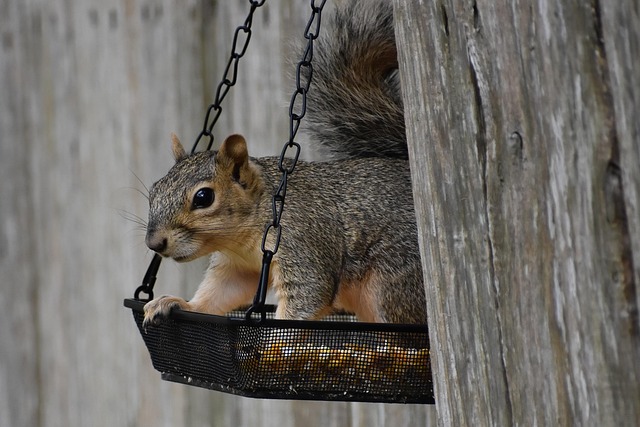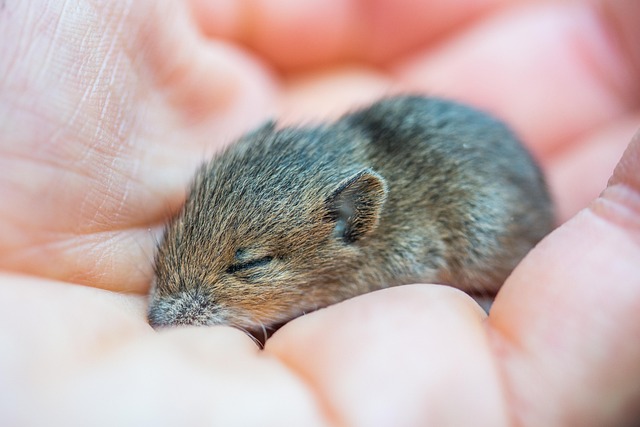Rodents like mice and rats cause significant property damage and transmit diseases. Effective rodent control involves sealing entry points, regular cleaning, removing food sources, and using natural repellents. While DIY methods like peppermint oil can be effective for minor infestations, severe cases require professional services employing humane, eco-friendly techniques. A comprehensive strategy includes both indoor and outdoor measures, such as sealing gaps, maintaining cleanliness, landscaping, and promoting a healthy ecosystem to prevent rodent issues.
Rodents can quickly turn into a home or business owner’s worst nightmare, causing significant damage and posing health risks. Understanding their behaviors and common types of infestations is the first step in effective rodent control. This article explores various strategies for managing rodents affordably, from DIY solutions to professional services, focusing on both traditional methods and eco-friendly options. By delving into these approaches, you’ll gain the knowledge needed to create a rodent-unfriendly environment and keep your spaces safe and healthy.
Understanding Rodent Infestations: Common Types and Behaviors

Rodent infestations are a common household problem, with mice and rats being the most frequent visitors. Understanding these pests is key to effective rodent control. Mice and rats belong to the same family, Rodentia, and share many similar behaviors and characteristics. They are both gnawers, known for their strong teeth that grow continuously, requiring them to chew regularly to maintain a healthy bite size. This behavior can cause significant damage to homes, as they gnaw on wiring, wood, and even insulation.
These rodents are highly adaptable and excellent at finding food and shelter. They prefer areas with easy access to food sources and hiding spots. Common entry points include gaps in walls, floors, and ceilings, as well as cracks in foundations. Rats, in particular, are excellent swimmers and climbers, enabling them to access buildings from both above and below ground levels. Effective rodent control involves identifying these entry points and sealing them off, along with regular cleaning and removing potential food sources.
The Impact of Rodents: Health Risks and Property Damage

Rodents, including rats and mice, can have a significant impact on both human health and property. Their presence in homes and businesses can pose serious health risks. Rodents are known carriers of various diseases such as Salmonella, Leptospirosis, and Hantavirus, which can be transmitted through their droppings, urine, or direct contact. These diseases can cause respiratory issues, fever, muscle aches, and even more severe complications if left untreated.
Moreover, rodents often cause considerable property damage. They gnaw on wiring, insulation, wood structures, and other materials, leading to electrical fires, power outages, and weakened building structures. Rodent infestations can also attract predators like snakes and birds of prey, further complicating the issue. Effective rodent control measures are essential to mitigate these risks and maintain a safe living environment.
Traditional Rodent Control Methods: Pros and Cons

Traditional rodent control methods, such as traps and poisons, have been used for centuries. While effective in the short term, they come with significant drawbacks. For one, these methods can be costly, especially when dealing with large infestations or extensive properties. Moreover, many conventional treatments pose risks to pets, children, and other non-target species, necessitating careful placement and monitoring.
Additionally, traditional rodent control often results in dead rodents, leading to unpleasant disposal issues. Furthermore, pests can develop resistance to poisons over time, rendering them less effective. These drawbacks have spurred the search for more affordable and environmentally friendly alternatives, driving innovation in rodent control products and practices.
Affordable Alternatives: DIY Solutions for Homeowners

Many homeowners often turn to professional services for rodent control, but there are affordable alternatives that can be just as effective. DIY solutions offer a cost-friendly approach to keeping rodents at bay, and with some creativity and basic tools, you can create an environment that is less than appealing to these pesky intruders.
One of the most common DIY methods involves using natural repellents. Peppermint oil, for instance, is known to deter rodents due to its strong scent. You can infuse this oil into cotton balls or small pouches and place them in problem areas. Alternatively, creating a barrier with essential oils like peppermint or cloves around your home’s perimeter can help keep rodents from entering. These natural solutions are not only affordable but also safe for pets and children.
Professional Services: When to Hire Experts for Effective Control

Many homeowners attempt DIY methods for rodent control, but there are instances where professional services offer a more effective and sustainable solution. While setting traps or using repellents can be part of a comprehensive approach, severe infestations often require specialized knowledge and equipment. Hiring experts in rodent control is particularly beneficial when dealing with burrowing rodents like mice or squirrels that have made their homes within walls or attics.
Professionals employ advanced techniques tailored to specific species, ensuring humane and eco-friendly methods. They also provide ongoing monitoring and maintenance, addressing re-entry points and implementing preventive measures to stop future infestations. This proactive approach not only saves time and effort but also offers long-term savings by preventing extensive damage caused by rodents.
Preventative Measures: Creating a Rodent-Unfriendly Environment

Creating an environment that discourages rodents is a key aspect of affordable rodent control. This involves taking proactive steps to eliminate potential food sources, water access, and hiding places. Simple measures like sealing gaps and cracks in walls or floors with steel wool or caulk can significantly hinder their entry points. Additionally, maintaining cleanliness by promptly cleaning up spills, storing food in airtight containers, and regular trash removal reduces attractants.
Landscaping plays a crucial role as well. Trimming bushes and trees close to buildings prevents easy access for rodents. Removing dense vegetation and clutter around the perimeter creates an unappealing habitat. Moreover, using natural repellents like mint, cayenne pepper, or certain types of plants known to deter rodents can be cost-effective and environmentally friendly alternatives to chemical treatments, enhancing your overall rodent control strategy.
Green and Eco-Friendly Options: Safely Managing Infestations

In today’s world, affordable and eco-conscious solutions for rodent control are gaining popularity as folks become more aware of the potential health risks and environmental impact of traditional methods. Green options offer a safe and effective way to manage infestations without resorting to harsh chemicals. These methods focus on prevention, sanitation, and natural deterrents to keep rodents at bay.
One such approach is maintaining excellent hygiene and sealing entry points to deny access to food and shelter. Using natural repellents like peppermint oil, cinnamon, or certain plants can also be effective in keeping rodents away. Additionally, promoting a healthy ecosystem by supporting beneficial insects and birds that prey on rodents can contribute to long-term control. These eco-friendly practices not only protect your home but also preserve the balance of nature.
